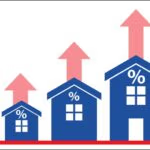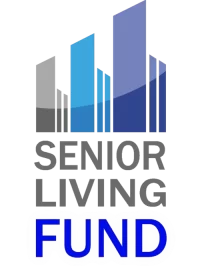Occupancy Up 15 Straight Quarters — and Counting.

The senior housing investment sector just marked a major milestone: Q1 2025 was the 15th consecutive quarter of occupancy rate growth, continuing the longest upward streak the industry has ever seen.
According to the National Investment Center for Seniors Housing & Care (NIC), net absorption remained strong, and occupancy for the 31 Primary Markets rose to 87.4%, up from pandemic-era lows that once dipped below 80%.
Demand Is Surging — and Supply Can’t Keep Up
In 10 of the past 15 quarters, the industry absorbed over 4,500 units — a level only reached once in all of NIC’s recorded history prior to 2021. This reinforces what many in the space already know: demand is far outpacing new supply.
“This is one of the few real estate sectors where demand is not optional,” said Dr. Chuck Harry, Chief Operating Officer at NIC. “The majority of senior housing decisions are needs-based — that makes this asset class fundamentally resilient.”
New construction remains historically low, especially in markets facing rising development costs and regulatory hurdles. As a result, we are entering a period where occupancy gains are likely to continue strengthening NOI and valuation across the board.
See It for Yourself: 15 Quarters of Growth
Since Q3 2021, occupancy has risen every single quarter — a 15-quarter streak fueled by steady leasing activity, cautious new development, and favorable demographic trends.

Why It Matters for Investors
The senior housing sector’s recovery is now well-established — and, critically, not dependent on speculation or temporary market dynamics.
Here’s what’s driving investor interest in 2025:
- Needs-based demand: Uncorrelated to economic cycles.
- Tightening supply: Development pricing and difficulty have constrained supply, reducing risk of oversaturation.
- Strong rent and NOI growth: Operators are regaining pricing power in stabilized markets.
- Demographic certainty: The leading edge of baby boomers begins aging into senior housing by 2026–2028.
As noted in Multi-Housing News, many real estate investment firms are shifting their focus toward senior living communities in secondary and tertiary markets — where absorption is strong, cap rates are favorable, and competition remains limited.
Where SLF Investments Comes In
At SLF Investments, we’ve aligned our strategy around exactly this type of opportunity: investing in stabilized, needs-based senior housing communities that are benefiting from this prolonged demand surge.
In Q1 2025, our portfolio experienced:
- A 2.1% increase in NOI
- A net gain of 37 occupied units
- Operational momentum across multiple markets
We believe the current window offers one of the most compelling long-term entry points we’ve seen in years — especially for accredited investors seeking durable income and equity appreciation.
Stay Ahead of the Curve
The senior housing recovery isn’t just a headline — it’s a trend with real staying power.
To learn more about how SLF is navigating this growth cycle and helping investors capitalize on it:
👉 Explore our current portfolio
👉 Read our May 2025 investor newsletter
👉 Get in touch with our investor relations team

Sources:
- NIC MAP Data Service
- Multi-Housing News
- McKnights Senior Living
How to Participate.
Senior Living Fund has five (5) investment offerings for accredited investors:
SLF Value-Add Fund 1 - (SLF VAF 1)
- Anticipated 4.5-5 Year Term
- Annual Accrual + Profit Participation
- 12.00% to 21.00% Projected Fund IRR
SLF Value-Add Fund 2 - (SLF VAF 2)
- Anticipated 4.5-5 year term
- Monthly Distributions + Profit Participation
- 10.50% to 20.00% Projected Fund IRR
F4 Fixed Note Offering
- Anticipated 3 Year Term
- Monthly Distributions
- Fixed Interest Rate Equal to 15% Per Annum
F5 Fixed Note Offering
- Anticipated 3 Year Term
- Monthly Distributions
- Fixed Interest Rate Equal to 15% Per Annum
F6 Fixed Note Offering
- Anticipated 3 year term
- Monthly Distributions
- Fixed Interest Rate Equal to 15% Per Annum
